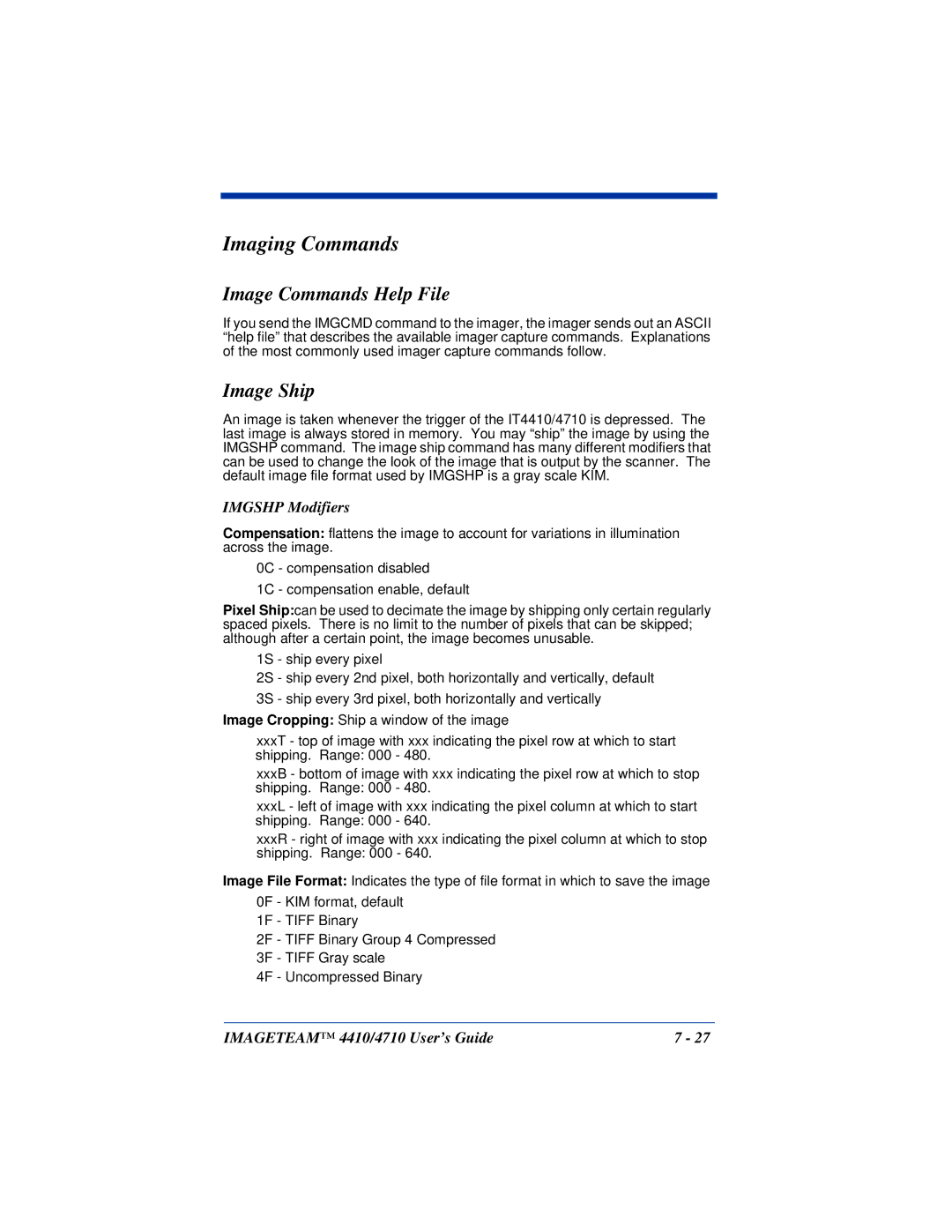
Imaging Commands
Image Commands Help File
If you send the IMGCMD command to the imager, the imager sends out an ASCII “help file” that describes the available imager capture commands. Explanations of the most commonly used imager capture commands follow.
Image Ship
An image is taken whenever the trigger of the IT4410/4710 is depressed. The last image is always stored in memory. You may “ship” the image by using the IMGSHP command. The image ship command has many different modifiers that can be used to change the look of the image that is output by the scanner. The default image file format used by IMGSHP is a gray scale KIM.
IMGSHP Modifiers
Compensation: flattens the image to account for variations in illumination across the image.
0C - compensation disabled
1C - compensation enable, default
Pixel Ship:can be used to decimate the image by shipping only certain regularly spaced pixels. There is no limit to the number of pixels that can be skipped; although after a certain point, the image becomes unusable.
1S - ship every pixel
2S - ship every 2nd pixel, both horizontally and vertically, default
3S - ship every 3rd pixel, both horizontally and vertically
Image Cropping: Ship a window of the image
xxxT - top of image with xxx indicating the pixel row at which to start shipping. Range: 000 - 480.
xxxB - bottom of image with xxx indicating the pixel row at which to stop shipping. Range: 000 - 480.
xxxL - left of image with xxx indicating the pixel column at which to start shipping. Range: 000 - 640.
xxxR - right of image with xxx indicating the pixel column at which to stop shipping. Range: 000 - 640.
Image File Format: Indicates the type of file format in which to save the image
0F - KIM format, default
1F - TIFF Binary
2F - TIFF Binary Group 4 Compressed
3F - TIFF Gray scale
4F - Uncompressed Binary
IMAGETEAM™ 4410/4710 User’s Guide | 7 - 27 |
